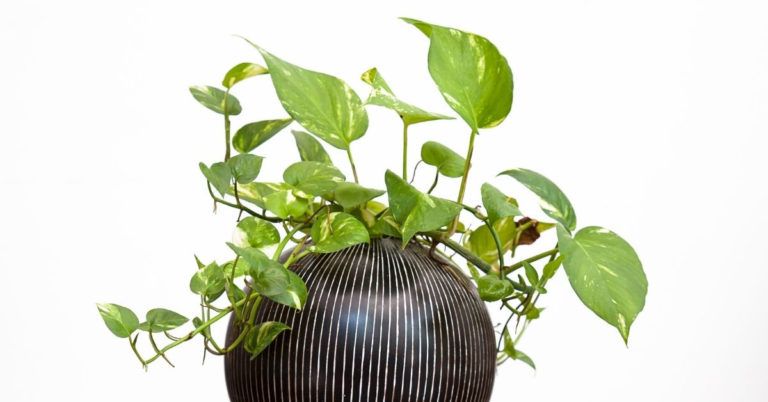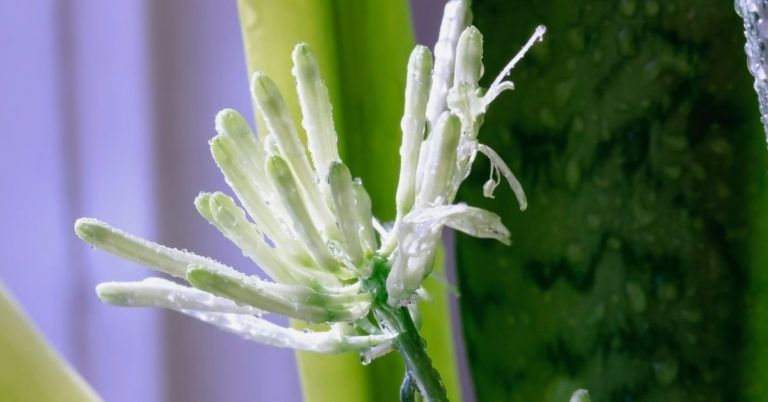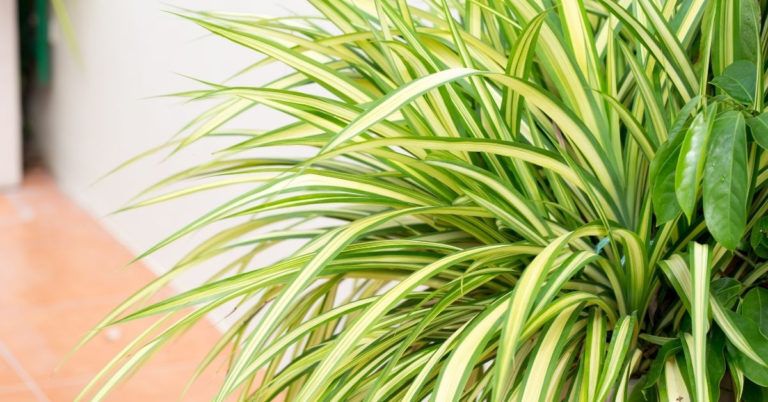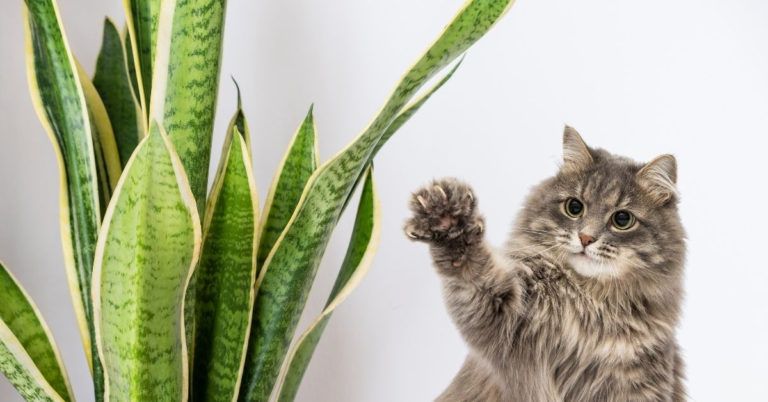Beginner Snake Plant Care: How to Care for a Snake Plant
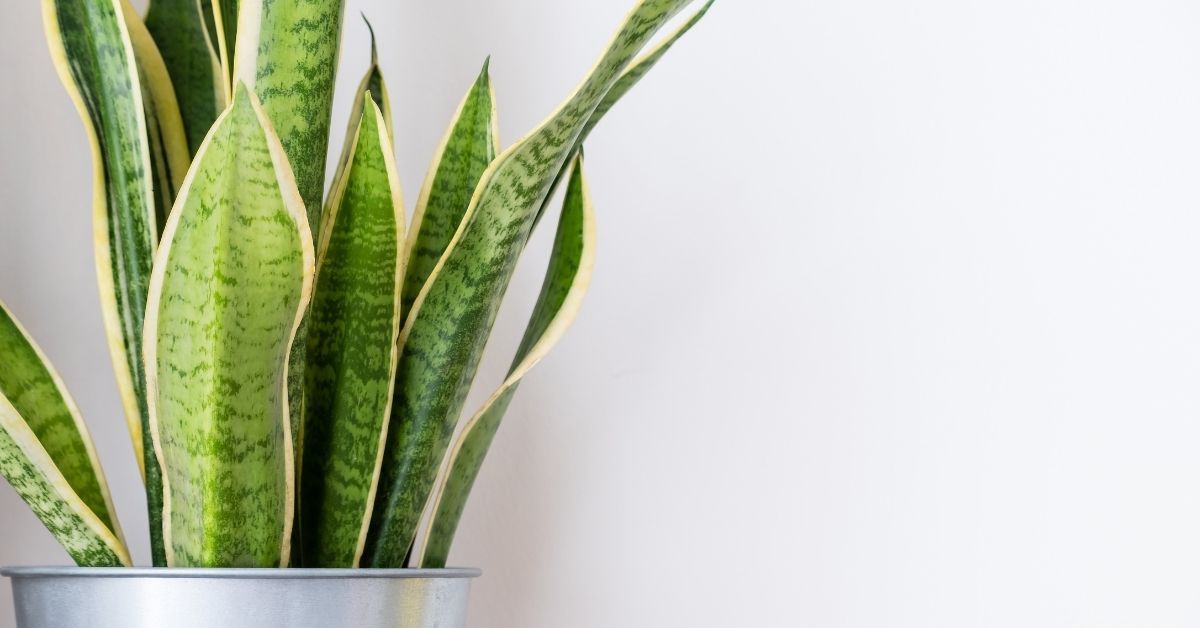
This snake plant care guide will show you how to take good care of your new houseplants.
In this beginner’s guide on snake plant care, you’ll learn:
- How to take care of a snake plant?
- How to propagate a snake plant?
- Is it okay to have snake plants around your pets?
- And so much more.
So if you want to learn how to make your snake plant thrive, this guide is for you.
Let’s dive right in!
How to Care for Snake Plant
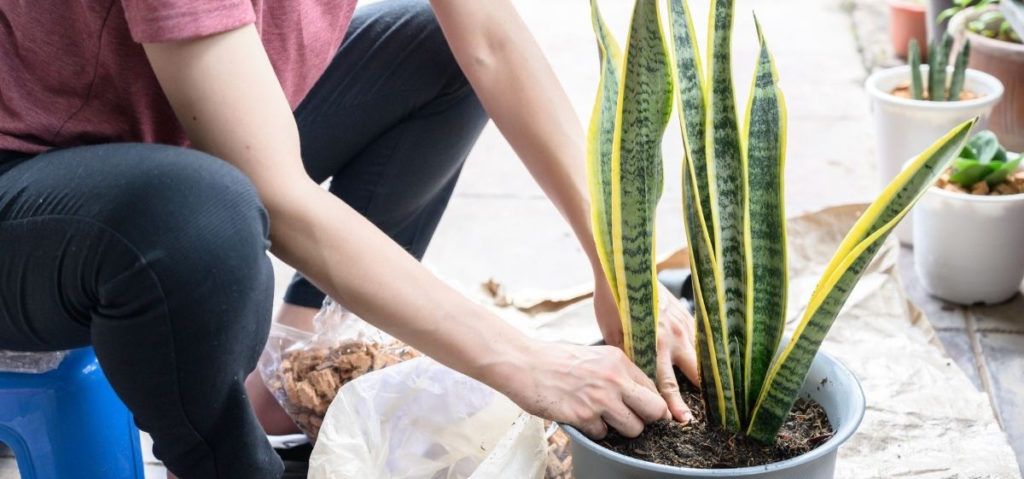
Sansevieria, also known as snake plants, is one of the most popular houseplants in the last few years.
A lot of people love to have this type of houseplant in their house for various reasons.
For a start, the snake plant can add a dramatic appeal to the interior design of a room.
The plant also requires very minimal care, making it very easy to keep alive.
Even though snake plant is originally from Southern Africa, they can thrive in almost any household, as long as the temperature is not too hot or cold.
This is why they are popular among new plant parents.
However, here are some aspects that you may need to watch out for when taking care of snake plants.
Light
Indirect sunlight is what’s going to keep your snake plants alive and well.
As long as you keep them in bright light that is not too hot, they will be able to keep growing.
But, most snake plant variants can also thrive well in rooms with a limited amount of natural light.
As a result, you can keep them in your bedroom or living room without worrying about the lighting.
Water
Overwatering is the most common cause of snake plant growth issues.
A lot of snake plant owners may underestimate the amount of water they pour on the houseplants.
Overwatering can create problems for snake plants as they are not very adaptable to soggy and wet soil.
There is also a possibility that the root will rot quickly if the soil has too much water.
The best tip for watering snake plants is to measure the amount of water in the soil carefully.
You can do this by dipping a wooden chopstick into the soil and inspecting if too much soggy soil sticks on it.
Also read: Can You Mist a Snake Plant? (Answered)
Soil
Since the root of snake plants can rot quickly on wet soil, it is always recommended to use a free-draining soil mix.
This type of soil mix will keep the plant’s roots dry while keeping bacteria that can cause rotting at bay.
A terracotta pot is also recommended because it will not trap water and keep the soil soggy.
However, to keep the soil dry, always remove the drained water from the saucer.
Temperature and Humidity
As long as you keep the snake plant in a room with an average temperature, you won’t have to worry about keeping them alive.
Since the plant is native to the hot region of southern Africa, it can tolerate high heat for a prolonged time.
However, it is always better to keep the houseplant from direct sunlight.
Usually, hot temperatures and direct sunlight can contribute to various changes to the colors and stripes of the snake plants.
Also read: Do Snake Plants Like Humidity? How to Keep Your Snake Plants Happy
Fertilizer
Using fertilizer is not always required to keep your snake plants thriving in your house.
However, fertilizer can still boost the growth of the plans, especially in growing seasons.
It is recommended to use a fertilizer with either a 10-10-10 or 20-20-20 balance. The ideal fertilizer application is between 4 to 6 weeks.
It may also be better to use a half dose of regular fertilizer to not overuse it for the plant.
In regions that have four seasons, more steps have to be taken to avoid overfertilization.
For instance, the amount of fertilizer should be reduced to half in the autumn months. You should also avoid fertilizing the plants in the winter months.
Types of Snake Plant
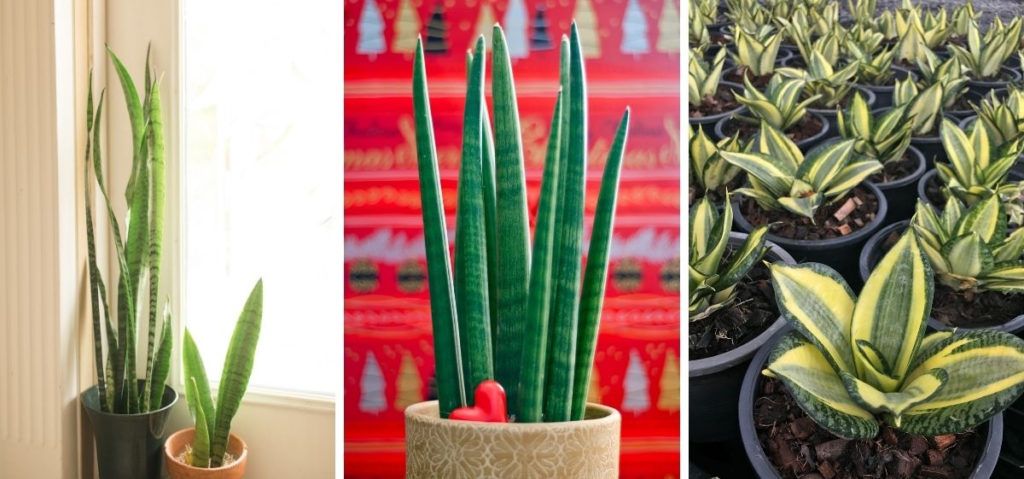
There are actually more than 130 varieties of snake plants. However, three of them are commonly grown and used for home decoration.
If you go to your local store and garden centers, you will most likely find these three variations.
The ‘Laurentii’ variants (Sansevieria trifasciata) are the most common, with dark-green leaves striped with yellowish lines on the edges.
Meanwhile, the ‘African Spear’ (Sansevieria cylindrica) is a one-of-a-kind plant with cylindrical dark-green leaves that can grow 70 cm long.
You may also come across the ‘Hahnii’ (Sansevieria trifasciata) variant, which resembles a bird’s nest.
Also read: Do Snake Plants Flower? (Revealed)
How Often Do I Need to Repot My Snake Plant?
While taking care of a snake plant is relatively easy, you may still need to repot the plant once in a while.
You may also need to use the correct type of soil mix for the plant.
The best soil mix type that you use should have a mixture of organic potting soil and organic compost. Using worm compost is also recommended as it is rich in plant nutrients.
Snake plants also prefer to live tightly. This means that you only need to repot the plan once it is already too crowded.
You should also avoid using deep pots for snake plants because deeper pots can hold more water, resulting in wet and soggy soil.
Also read: Do Snake Plants Need Drainage Holes? (Explained)
How to Propagate a Snake Plant?
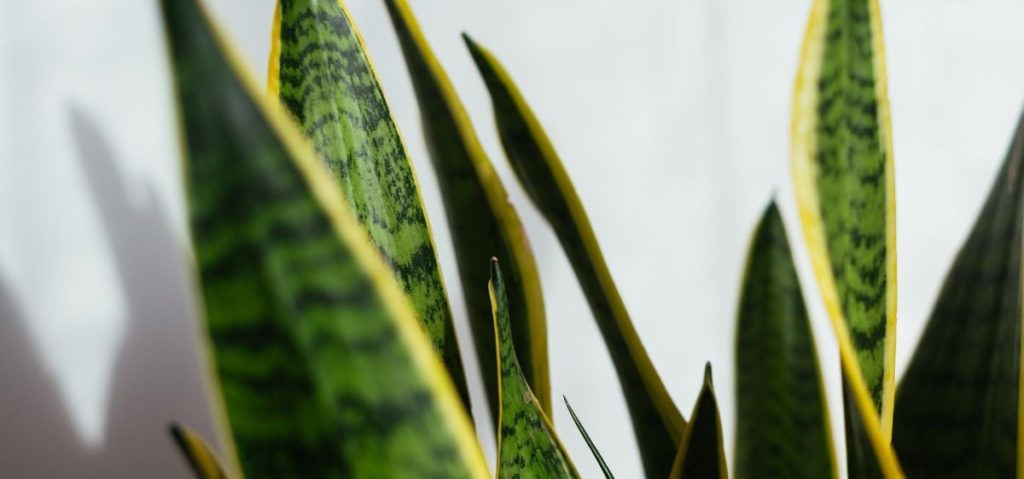
Too much moisture in the soil can indeed cause problems for your snake plants. However, propagating the snake plant usually requires the usage of water.
There are two common methods for propagating a snake plant.
Propagate by Division
Snake plants also have natural rhizomes that can be separated from the main plant.
You can shear the base of the plants into separate sections. The new sections will be able to grow into new plants in just a couple of weeks.
Make sure that you put the new plant sections in separate potting with fresh soil mix. You may need to supply the soil with enough water to boost the growth of new roots.
Propagate by Leaf Cuttings in Soil or Water
The easiest method to propagate snake plants is to cut a healthy leaf from the plant and put the cut end in water.
Make sure there is enough water to cover the bottom of the plant so that new roots can grow.
You can also cover the cut end with moist sand or soil, which will sprout new roots in a few weeks. This method also prevents rot from growing on the new roots.
You can also use peat moss as a growth medium for the leaf-cutting method. Just make sure that you avoid shining direct sunlight on the new cutting.
Is It Safe For Me And My Pets To Have A Snake Plant In The House?
Snake plants are safe for humans and will not cause any reaction when it is touched.
However, the plant can be dangerous to typical house pets, including cats and dogs.
This is because snake plants contain saponins, a toxic substance that can endanger those animals.
If your pets nibble the leaves of a snake plant, they’ll show signs of poisoning such as vomiting, nausea, or diarrhea as a result.
If you suspect that your pets have consumed any part of a snake plant, you should contact your local veterinarian or poison control in your area immediately.
Further reading: Are Snake Plants Toxic to Cats? Find Out How to Keep Your Cats Safe!
Common Snake Plant Issues
The most common factor that can disturb the growth of a snake plant is the moisture level.
Many snake plant owners may have difficulty getting the correct moisture level to prevent the growth of rots and fungus on the plant.
The plant also has a tendency to absorb more water than it needs from the soil. This is why you should only water the plant when necessary to avoid this problem.
Other problems can also occur on the snake plant, including slow growth, dead roots, leaf loss, and others.
Smelly Soil
Rots on the snake plant roots can result in dead roots. You can usually notice this problem by a foul odor that may come out from the soil mix.
Dig up a small amount of soil and examine the plant roots for a quick look at the problem.
If you have noticed that the root is in an unhealthy state, you may need to give immediate attention to prevent the death of your snake plant.
Brown or Yellow Leaves
While snake plants have hundreds of varieties, most of them have dark-green leaves with yellowish or whitish stripes.
If your plant’s leaves appear yellow or even brown, this could be an indication of a problem with its health.
It may be challenging to find the real cause of the brown or yellow leaves on snake plants.
However, you can examine the condition of the plant’s roots. You may also be able to save the plant by moving it to a new pot with a fresh soil medium.
Curling or Dropping Leaves
If your snake plant drops leaves, this may be an indicator of a bad health condition of the plant.
You should identify the real culprit before taking the right measure to return the health of the plant.
The most common cause of curling or dropping leaves is overwatering.
When you overwater snake plants, the leaves will store too much water. This will cause the plant to struggle to keep its heavy leaves upright.
Inadequate lighting can also cause the leaves to drop from the main plant.
Snake plant requires natural light with medium intensity. If you cannot get natural lighting in the room, the plant can also thrive well with artificial lighting.
FAQs about Snake Plant Care
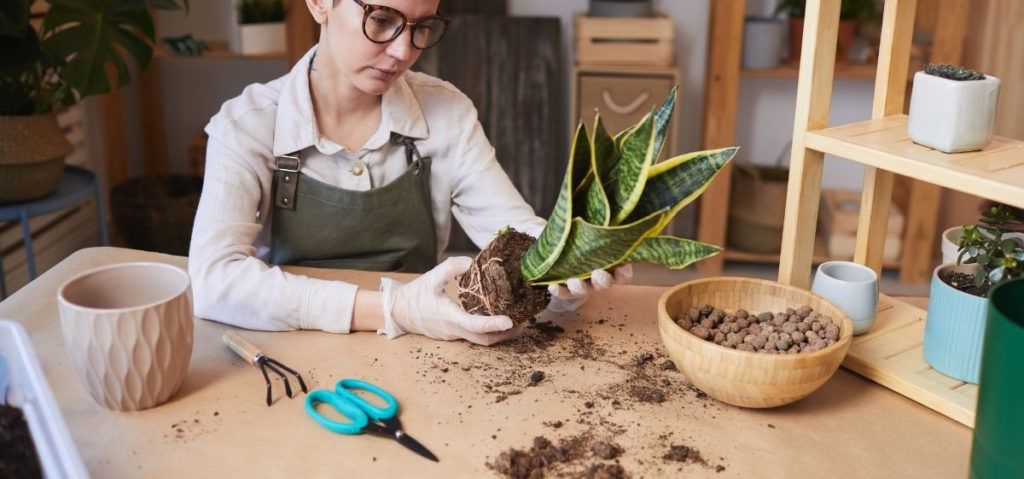
Snake plants are easy to manage, and you only need to perform little maintenance to keep them thriving in your house.
The most important aspect is to keep the right amount of water and place them in the right place.
They also have a relatively long lifespan. A typical and healthy snake plant can live for up to 25 years.
While different types of snake plants are available, the methods to take care of the plant are usually similar.
The color of the leaves itself can tell you the condition of your plants and what they need to thrive well.
Here are some of the common questions that people often ask about snake plants care.
How Often Should I Water a Snake Plant?
Excessive watering is one of the most damaging things you can do to the plant.
It is generally recommended to water your snake plant once every 3 to 4 weeks.
It is easy to overwater snake plants that can result in the inability of the plant to grow properly.
You only need to use a little bit of water to wet the soil mix just enough. You should also let the soil gets dry properly before watering it again.
It is also recommended to reduce the amount of water you apply to the plant during the winter months. It is always better to under-water the snake plant instead of overwatering it.
Further reading: How Often To Water Snake Plant: A Guide For New Plant Parents
Where Should I Keep My Snake Plant at Home?
You can keep the snake plant in a room that has adequate natural lighting.
However, always avoid direct sunlight to reduce the effect of the sun on the color of the leaves.
The plant can also adapt well if you place it in a room with dim lighting.
Snake plants will thrive as long as there is an adequate supply of water and light.
When it comes to temperature, avoid exposing the plant to temperatures below 50°F.
On the aspect of temperature, avoid exposing the plant to an ambient temperature lower than 50°F.
Drafts and strong winds can also have an impact on the plant’s growth, so it’s best to keep the snake plant indoors.
Further reading: Can a Snake Plant Live Outside? (Answered)
Do Snake Plants Need Humidifiers?
In their natural environment, snake plants thrive well in hot and humid weather conditions.
However, it is generally not required to use a humidifier to keep the plant alive.
Using a humidifier indoor for the snake plant can create a condition that might be too humid for the plant.
High humidity can promote the growth of fungus and rots on the plant leaves and roots.
You should also avoid misting the plant with water. Frequent misting can lead to a high amount of water stored in the plant. This condition can lead to several issues with the leaves.
Final Words
Snake plants are easy to take care of, and they also give a lot of benefits in cleaning the air around you.
With snake plants, you won’t have to bother with any complicated houseplant care procedures.
All you need to do is to give the plan the right amount of water and light.
The abundance of snake plant varieties will also provide you with a plethora of options for decorating your home with this type of houseplant.
All in all, the snake plant is an excellent choice for people who don’t have a lot of experience in taking care of houseplants.
I hope that this post has provided you with more insight into caring for a snake plant properly.
If you have any questions about snake plant care, feel free to drop a comment below.
You can also check our houseplant care guide if you want to learn how to take good care of a variety of houseplants in your home.
Until then, happy gardening!

